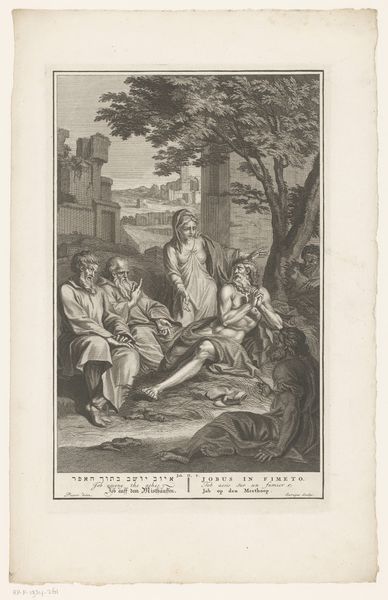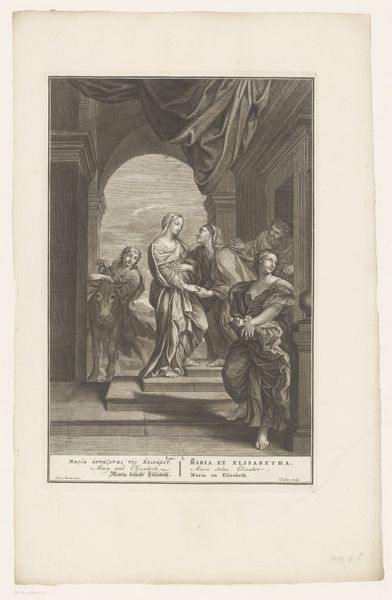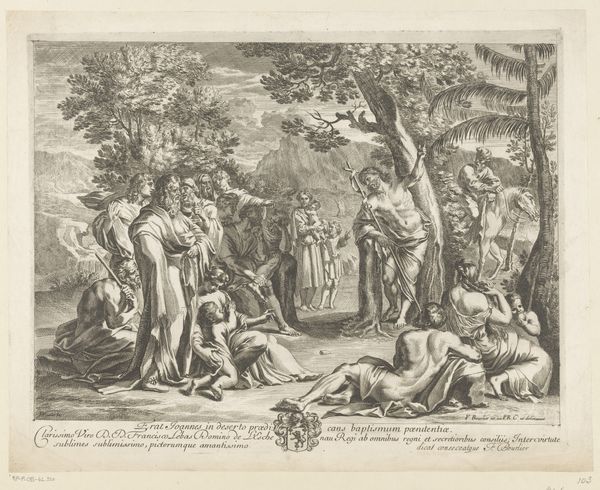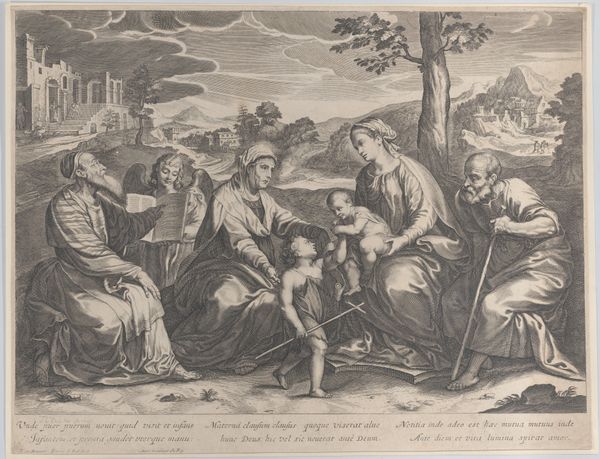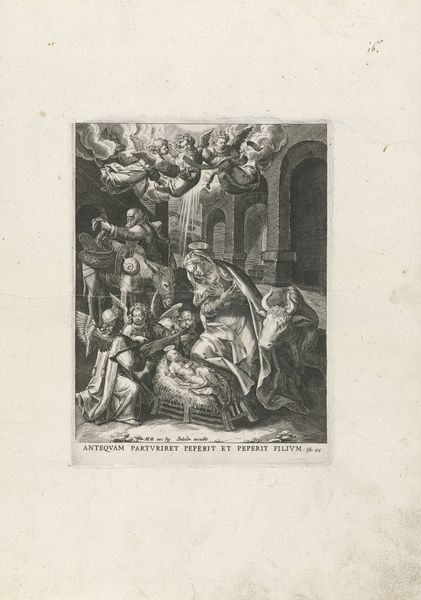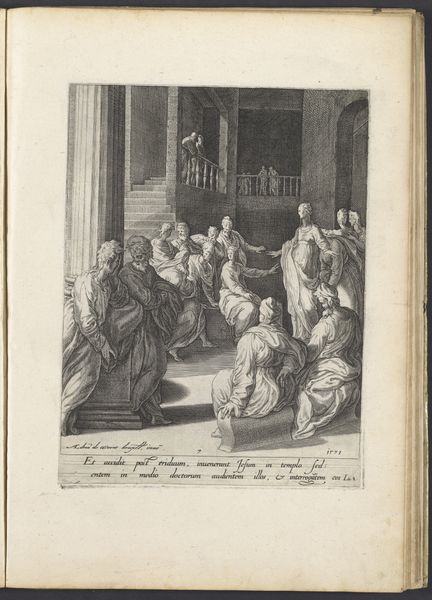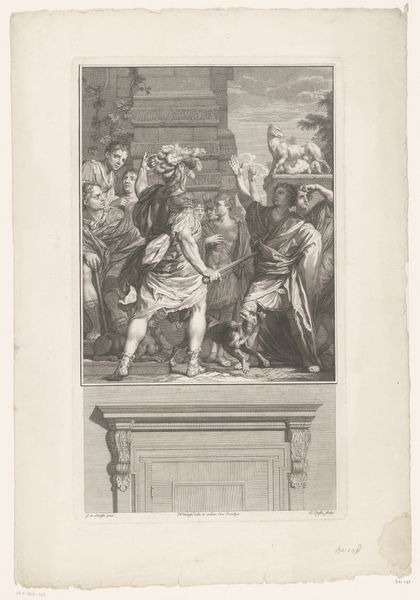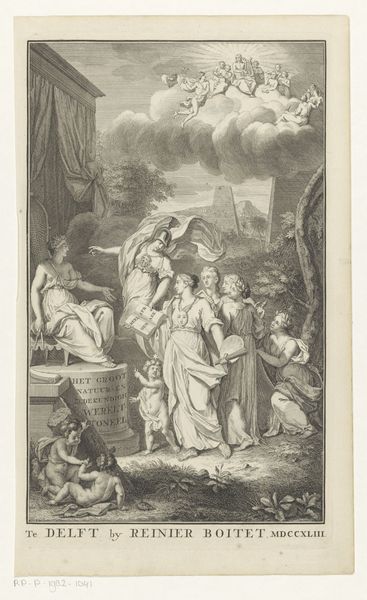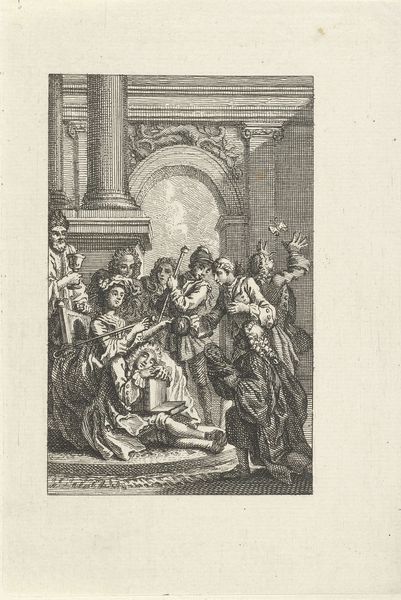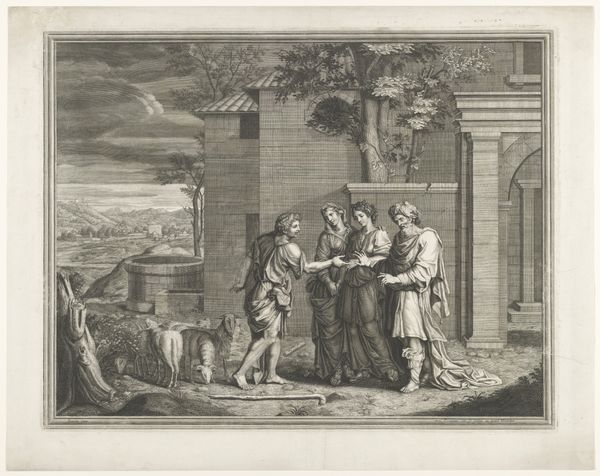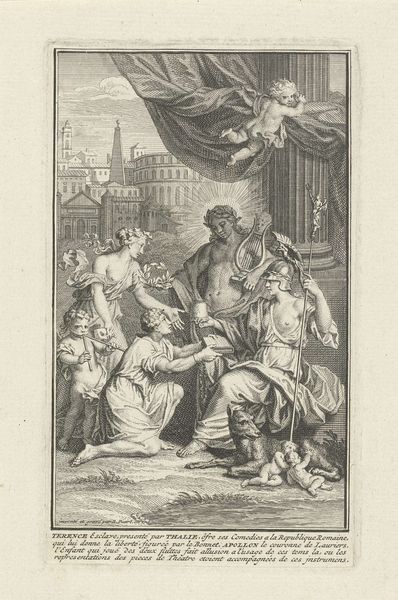
print, engraving
#
narrative-art
#
baroque
# print
#
figuration
#
group-portraits
#
history-painting
#
engraving
Dimensions: height 357 mm, width 240 mm
Copyright: Rijks Museum: Open Domain
Curator: This engraving, attributed to Simon de la Vallée and created sometime between 1690 and 1730, is titled "Christus zegent de kinderen," or "Christ Blessing the Children." It's currently held here at the Rijksmuseum. Editor: My first impression is that it conveys a very tender scene. The children reaching for Christ evoke feelings of innocence and trust, while the overall gray scale adds a somber note to the joyfulness of the narrative. Curator: Yes, the choice to work with engraving emphasizes line and form. We see here the classic Baroque elements of drama and movement, a kind of visual sermon meant to be readily reproduced. Think about the socio-political implications – easily accessible art reinforcing religious ideologies and patriarchal power structures. The way children, especially, are framed… Editor: But the symbolism is what really resonates with me. The light emanating from Christ is an iconic representation of divine grace. Notice the pyramid-shaped structure in the background–suggestive of ancient knowledge and enduring wisdom against the transient classical backdrop. The expressions on the faces around, too—wonder, scepticism. It's like a catalogue of reactions to encountering the divine. Curator: And how the women escorting the children are subtly placed, not centered, but essential in their mediating role between the domestic space of childhood and the authoritative presence of Christ. We can interpret the piece as endorsing certain gender roles in society and the need to indoctrinate even children early on. Editor: That's a fair interpretation. But considering the perennial appeal of the imagery, it transcends solely the politics of the era in which it was crafted. Childlike innocence being received and blessed touches on universal emotional chords, and regardless of the context of the piece, it still stirs a strong sentiment, one that may be independent of those forces you describe. Curator: That appeal certainly helped perpetuate and normalize those roles for centuries though. Recognizing those functions is just as important as the visual appreciation. Editor: I can appreciate that angle. Seeing these layered, long-term meanings within enduring images really reveals to me how humans have experienced the spiritual world through visual media. It connects us back to our origins, and highlights enduring themes that permeate even the most current discussions on identity, gender, and inclusion.
Comments
No comments
Be the first to comment and join the conversation on the ultimate creative platform.
